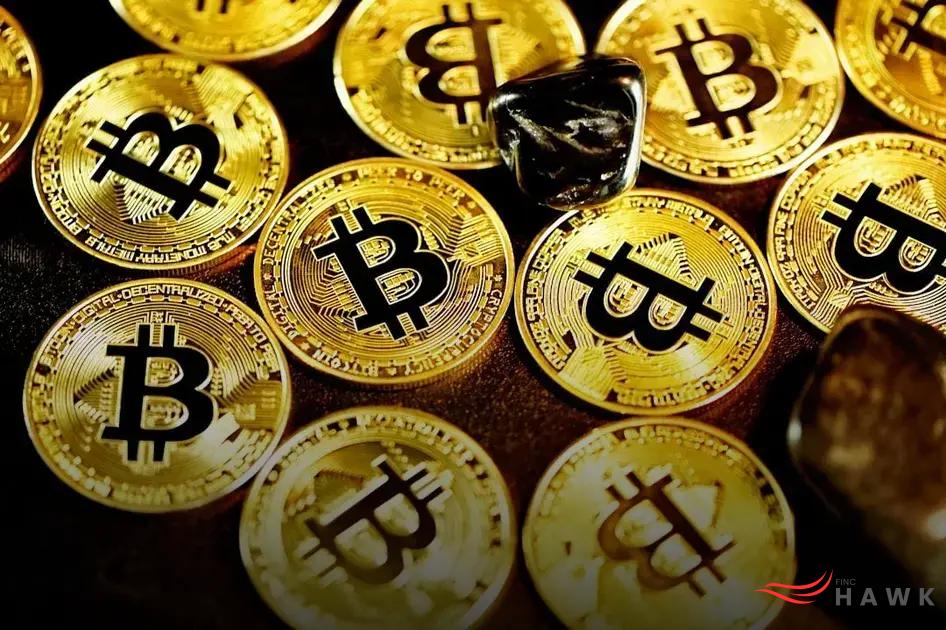The Future of DeFi is transforming the financial industry with innovative decentralized technologies that promise greater accessibility and efficiency. As we delve into the fundamentals of DeFi, it’s essential to grasp recent trends, understand existing challenges, explore growth opportunities, and anticipate the future landscape of decentralized finance. Navigating this rapidly evolving ecosystem requires staying informed about market dynamics and technological advancements.
Understanding DeFi Basics
Decentralized Finance (DeFi) represents a massive shift from traditional financial systems by eliminating intermediaries like banks and brokers. Instead, it leverages blockchain technology to facilitate financial services. At its core, DeFi consists of smart contracts built on blockchains such as Ethereum. These smart contracts automate processes and transactions, ensuring security and transparency.
In DeFi, you engage directly with peers, making transactions swift and borderless. Using digital wallets, users can lend, borrow, and trade assets seamlessly.
Key components include:
- Decentralized Exchanges (DEXs)
- Lending Platforms
- Stablecoins
- Yield Farming
Each of these elements plays a distinct role in the DeFi ecosystem, offering alternatives to conventional financial products. For example, decentralized exchanges facilitate trading without central authority regulation, while lending platforms allow users to earn interest on their assets. Moreover, stablecoins attempt to stabilize digital asset value, making them a crucial part of financial transactions within the DeFi space.
The inclusive nature of DeFi is its most notable advantage. With just a smartphone and internet connection, individuals worldwide can gain access to financial services that were previously unavailable. This democratization of finance is a critical element in understanding DeFi and its potential to reshape the global economy.
Current Trends in Decentralized Finance

The decentralized finance sector is ever-evolving, with new trends shaping its future. One of the significant trends is the rise of decentralized exchanges (DEXs), offering users greater control over their assets while reducing reliance on traditional intermediaries. Automated Market Makers (AMMs) are at the forefront, facilitating trades without the need for an order book. This innovation not only enhances liquidity but also democratizes access to trading.
Yield farming has become a popular trend, allowing users to earn rewards by providing liquidity to protocols. This creates opportunities for lucrative returns and drives more participants into the DeFi space. However, it also brings about risks, such as impermanent loss, that users must carefully assess.
Another trend is the integration of DeFi with traditional finance. Institutions are starting to recognize the benefits of blockchain technology, leading to collaborations that aim to combine the strengths of both worlds. This merger could pave the way for a more robust and accessible financial system.
Interoperability is gaining traction as protocols seek to ensure seamless interaction between different blockchain networks. This addresses the challenge of isolation among protocols, fostering a more connected ecosystem.
Additionally, security remains a crucial focus. With increasing complexity in DeFi protocols, developers are prioritizing security audits and implementing measures to protect users from potential vulnerabilities. This trend underscores the importance of building trust within the ecosystem.
Challenges Facing DeFi Ecosystem
The DeFi ecosystem faces a multitude of challenges largely due to its rapidly evolving nature and technical complexities. Security Concerns are at the forefront, with vulnerabilities in smart contracts leading to potential hacks and significant financial losses. Ensuring the safety of user funds is crucial, and robust security audits and continuous monitoring are paramount.
Regulatory Issues also present considerable obstacles. As DeFi operates outside traditional financial systems, it often lacks clear regulatory frameworks. This can lead to uncertainty and hesitance among potential users and investors. Countries worldwide are continuously evaluating how to regulate DeFi, balancing innovation with protection of consumers.
Another significant challenge is Scalability. As more users and transactions flood DeFi platforms, scalability becomes a pressing issue. Network congestion can lead to high gas fees, making transactions costly and less appealing for users. Solutions such as layer 2 technologies and sharding are being explored to enhance scalability and reduce fees.
User Experience (UX) is crucial in attracting and retaining users in the DeFi space. Complex interfaces and understanding requirements pose significant challenges for newcomers. Improving UX with intuitive designs and educational resources can lower the entry barriers for a broader audience.
Lastly, Interoperability across different blockchain platforms is essential for the seamless movement of assets and data. Current inefficiencies hinder the potential for growth and innovation. Promoting standards and protocols that facilitate cross-chain interactions will be vital for the sustainable growth of the DeFi ecosystem.
Opportunities for Growth in DeFi

DeFi boasts numerous opportunities for growth as it continues to innovate the financial landscape. A key area is financial inclusion; DeFi can reach the unbanked populations by providing access to various financial services without the need for traditional banks. As more people gain internet access, DeFi’s user base has the potential to grow exponentially.
Moreover, DeFi can also expand through enhanced interoperability between different blockchains. Currently, many DeFi applications operate independently, but with increased cooperation, the ecosystem could achieve new levels of efficiency and expand its functionality.
Another growth avenue is the integration of regulatory frameworks. While regulations may seem restrictive, they can also provide clarity and legitimacy to the DeFi sector, encouraging participation from institutional investors. Collaboration between DeFi projects and regulatory bodies could be pivotal in this regard.
The development of innovative financial instruments is another catalyst for growth. Products like decentralized insurance, yield farming, and synthetic assets are gaining traction, and they exemplify the unique offerings DeFi can provide over traditional finance.
The ongoing advancement in decentralized identity solutions also represents a growth opportunity. By ensuring secure and verifiable identities, these solutions can increase trust within the DeFi space and open up new possibilities for personalized financial services.
As the DeFi industry continues to mature, the above sectors highlight potential growth paths that can help shape the future of decentralized finance.
Predictions for the Future of DeFi
The current pace of change in DeFi indicates a dynamic evolution ahead. Expect an increase in interoperability as new blockchain protocols continue to emerge. This will enhance connectivity between different DeFi services. Decentralized exchanges are likely to become more sophisticated, focusing on improved user interfaces and enhanced security measures.
It’s possible we’ll witness the rise of synthetic assets, providing a plethora of investment opportunities that mimic traditional assets. Furthermore, the role of stablecoins might expand, offering new solutions for cross-border transactions and remittances.
Regulatory Developments
The interaction with regulations will play a crucial role. Anticipate regulatory frameworks that support innovation while ensuring user protection. As governments explore this landscape, clarity around compliance and legal considerations will likely emerge.
Technological advancements will continue to push the envelope. Enhanced smart contract capabilities could lead to more efficient and feature-rich financial products. There’s a potential for AI-powered tools to integrate into DeFi, bringing automation and personalized financial advice to users.
Overall, a significant shift towards mass adoption is anticipated. As knowledge about DeFi grows, the user base is likely to expand, drawing in both retail and institutional investors. Keep an eye on how traditional financial institutions might join forces or adapt to this new paradigm, further blurring the lines between centralized and decentralized finance.





